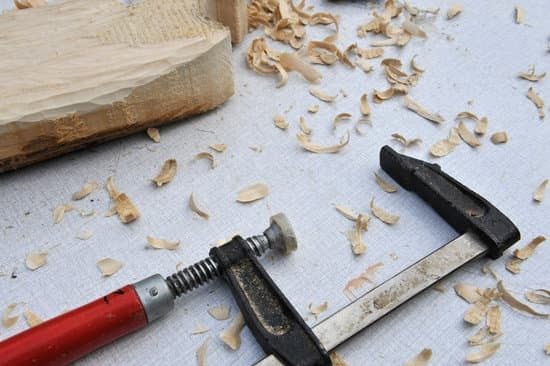Is the cracking paint on your doors and woodwork making your living space look tired and worn out? Understanding the causes of this issue is the first step towards finding a solution. Whether it’s due to age, moisture, or other factors, there are ways to address this common problem. In this article, we’ll explore the reasons behind cracking paint and provide practical tips on how to handle it effectively.
Assessing the extent of the damage is crucial when dealing with cracking paint on doors and woodwork. This involves examining the affected areas to determine the severity of the cracks and identifying any underlying issues contributing to the problem. Once you have a clear understanding of the extent of the damage, you can then proceed with preparing the surface for repairs.
Preparing the surface for repairs is an important part of addressing cracking paint. This involves removing any remaining loose or cracked paint, smoothing out imperfections, and ensuring a clean and stable surface for repainting. By following a systematic approach to preparation, you can set the stage for successful repairs that will restore the beauty of your doors and woodwork.
Assessing the Extent of the Damage
When dealing with cracking paint on doors and woodwork, it is crucial to accurately assess the extent of the damage before proceeding with any repairs. This step will help determine the best approach to take in restoring the affected surfaces back to their original state. Here are some key points to consider when assessing the damage:
1. Check for peeling or flaking: Take a close look at the areas where the paint is cracking and check if there are any signs of peeling or flaking. This can indicate that the problem may be more than just surface-level cracking, and could require additional steps such as stripping or sanding.
2. Inspect for underlying issues: Examine the condition of the wood underneath the cracked paint. Look for any signs of moisture damage, rot, or mold, as these issues could be contributing factors to the paint cracking. Addressing these underlying issues is crucial in ensuring that the repaired surface remains intact.
3. Measure the size and depth of the cracks: Use a ruler or measuring tape to gauge the size and depth of the cracks in the paint. This will help determine whether simple touch-up painting will suffice, or if more extensive repairs such as filling and sanding are necessary.
It is important to thoroughly assess all areas with cracking paint to accurately identify what needs to be done for proper repair and restoration of your doors and woodwork. Once you have a clear understanding of the extent of the damage, you can then proceed with preparing and executing effective repairs to achieve a seamless finish that will last for years to come.
Preparing the Surface for Repairs
Before diving into repairing cracking paint on doors and woodwork, it’s essential to properly prepare the surface for the upcoming repairs. This step is crucial to ensure that the repairs are effective and long-lasting.
Clean the Surface
Start by thoroughly cleaning the affected areas with a mild detergent and water. Use a sponge or soft cloth to gently scrub away any dirt, grime, or grease that may have accumulated on the surface. Allow the surface to dry completely before proceeding to the next step.
Remove Loose Paint
Inspect the area for any loose or peeling paint. Using a putty knife or paint scraper, carefully remove any flaking paint until you reach a point where the paint adheres firmly to the surface. It’s important to eliminate all loose paint to prevent future cracking.
Smooth Out Imperfections
After removing loose paint, use sandpaper to smooth out any rough or uneven surfaces. This will create a uniform and level base for the new primer and paint. Be sure to remove any dust created during sanding by wiping down the surface with a clean, damp cloth.
By properly preparing the surface for repairs, you can ensure that your efforts in repairing cracking paint on doors and woodwork are successful and long-lasting. Taking these steps will set you up for a seamless finish once you move on to applying primer and paint.
Choosing the Right Tools and Materials for Repair
When it comes to repairing cracking paint on doors and woodwork, choosing the right tools and materials is crucial for a successful and long-lasting repair. One of the most important tools you will need is a quality paint scraper or putty knife. These tools will help you effectively remove the cracked paint from the surface, preparing it for repairs. Additionally, sandpaper of varying grits will be necessary to smooth out the surface after scraping off the old paint.
In terms of materials, it’s essential to invest in high-quality wood filler or spackling paste to fill in any cracks or imperfections on the surface. This will ensure that once painted, the surface looks seamless and free of blemishes. When it comes to choosing primer and paint, opt for products specifically designed for wood surfaces to ensure proper adhesion and durability.
Another important consideration when choosing tools and materials for repair is personal protective equipment (PPE). Safety goggles, gloves, and a mask are essential for protecting yourself from paint fumes, dust, and debris during the repair process.
Ultimately, choosing the right tools and materials for repair is key to achieving a professional-looking finish that will stand the test of time. By investing in quality products and taking proper safety precautions, you can ensure that your repair efforts result in beautifully restored doors and woodwork.
Step-by-Step Guide to Sanding and Stripping the Cracked Paint
When dealing with cracking paint on doors and woodwork, it is crucial to follow a proper step-by-step guide to sanding and stripping the cracked paint. This process will help ensure that the repair work is done effectively and the surface is prepped for a seamless finish.
Step 1: Prepare the Work Area
Before you begin sanding and stripping the cracked paint, it is important to prepare the work area. This includes laying down protective covers on the floor and nearby furniture to prevent any damage from dust or paint particles. Additionally, ensure proper ventilation in the room by opening windows or using fans to minimize exposure to dust and fumes.
Step 2: Sanding the Surface
Using a medium-grit sandpaper, carefully sand the affected areas to remove any loose or peeling paint. It is important to focus on smoothing out the edges where the paint has cracked to create a level surface for repainting. Be sure to wear protective gear such as goggles and a mask while sanding to protect yourself from inhaling dust particles.
Step 3: Stripping Old Paint (If Necessary)
If the cracking paint is extensive or if there are multiple layers of old paint, you may need to consider using a chemical paint stripper for more thorough removal. Follow the manufacturer’s instructions carefully when using a paint stripper, as they can be potent chemicals that require proper handling and disposal.
By following these steps, you can effectively prepare the surface for repairing cracked paint on doors and woodwork. However, it’s important to note that if you are unsure or uncomfortable with these steps, it may be best to reach out to professionals who have experience in handling this type of repair work.
Repairing the Cracks and Imperfections
Once you have thoroughly sanded and stripped the cracked paint from your doors and woodwork, it is time to start repairing the imperfections. Fill any cracks, dents, or holes with a high-quality wood filler that matches the color of your woodwork. Use a putty knife to ensure that the filler is spread evenly and smoothly across the surface. Allow the filler to dry completely before moving on to the next step.
After the filler has dried, use fine-grit sandpaper to gently sand down the repaired areas. This will help to smooth out any rough spots and blend the filled areas with the rest of the surface. Take your time during this step to achieve a seamless finish. Once you are satisfied with the smoothness of the repaired areas, wipe down the entire surface with a clean, damp cloth to remove any dust or debris.
Next, it’s important to ensure that all repaired areas are primed before applying a fresh coat of paint. This will help the paint adhere properly and provide a consistent finish across your doors and woodwork. Make sure to use a high-quality primer that is specifically designed for use on wood surfaces. Apply it evenly using a brush or roller, and allow it to dry completely before moving on to painting.
| Repairing Process | Description |
|---|---|
| Filling Cracks & Holes | Use wood filler matched with wood color; spread evenly with putty knife |
| Sanding Repaired Areas | Use fine-grit sandpaper; smooth out rough spots; blend filled areas with rest of surface |
| Priming Repaired Areas | Apply high-quality primer specifically designed for use on wood surfaces; allow it to dry completely before painting |
By following these steps carefully, you can effectively repair cracking paint on doors and woodwork without having to replace them entirely. This process will not only restore their appearance but also prevent further damage in the future. If you have addressed all sections according at our outline but are still unsure about how how ot proceed hiring a professional for complex or extensive repairs might be necessary in order guarantee higher quality results.
Applying Primer and Paint for a Seamless Finish
Once you have sanded and repaired the cracks and imperfections on your doors and woodwork, the next step is to apply primer and paint for a seamless finish. Here are some steps to guide you through this process:
1. Apply a High-Quality Primer: Before applying the paint, it’s essential to use a high-quality primer to ensure adhesion and durability. Make sure to choose a primer that is suitable for the type of surface you are working with, whether it’s wood, metal, or composite material.
2. Choose the Right Paint: Once the primer has dried, it’s time to choose the right paint for your doors and woodwork. Consider using a high-quality latex or alkyd-based paint that is specifically designed for interior surfaces. Select a color that complements the overall aesthetic of your space.
3. Apply Multiple Coats: To achieve a seamless finish, it’s important to apply multiple coats of paint. Allow each coat to dry completely before applying the next one. This will help cover any remaining imperfections and provide a more professional-looking result.
4. Use Proper Painting Techniques: When applying the paint, use smooth and even strokes to avoid streaks or brush marks. If you are painting intricate details or hard-to-reach areas, consider using small brushes or foam applicators for better control.
5. Seal the Surface: Once you are satisfied with the coverage and finish of the paint, consider sealing the surface with a clear topcoat for added protection against wear and tear.
By following these steps and taking your time with each stage of the process, you can achieve a seamless finish on your doors and woodwork that looks professional and polished.
– Don’t rush through this process; take your time to ensure each coat dries properly before moving on.
– Consider using painter’s tape to protect adjacent surfaces from accidental splatters or smudges.
– Proper ventilation is crucial when working with primers and paints; make sure to open windows or use fans to keep the area well-ventilated during application.
– If you encounter any difficulties in achieving a smooth finish, don’t hesitate to seek advice from professionals at your local hardware store or consider hiring a professional painter for guidance on how best to proceed with this task.
– Regularly inspect painted surfaces for signs of cracking or peeling in order to address issues early on before they become extensive problems requiring more significant repairs.
Maintaining the Repaired Surface to Prevent Future Cracking
Once you have successfully repaired the cracking paint on your doors and woodwork, it is essential to take steps to prevent future cracking and damage. One of the most important things you can do is to ensure proper ventilation in the area where the doors and woodwork are located. Poor ventilation can lead to moisture buildup, which can ultimately cause paint to crack and peel. Consider using a dehumidifier in areas with high humidity levels to prevent future damage.
Another important aspect of maintaining the repaired surface is regular cleaning and inspection. Dust, dirt, and grime can contribute to paint deterioration over time, so make sure to clean the doors and woodwork regularly using a gentle cleaning solution and a soft cloth. Inspect the surfaces for any signs of cracking or peeling on a regular basis, taking prompt action if any issues are identified.
Furthermore, consider applying a fresh coat of paint as part of your maintenance routine. Even if the repaired surface looks seamless and flawless, applying a new coat of paint every few years can help protect against future cracking and keep the doors and woodwork looking their best.
Additionally, using a high-quality primer before painting can further enhance protection against cracking and other forms of damage. By following these maintenance steps, you can prolong the life of your repaired surfaces and minimize the risk of future cracking.
Hiring a Professional for Complex or Extensive Repairs
In conclusion, dealing with cracking paint on doors and woodwork can be a challenging but manageable task. Understanding the causes of the issue, assessing the extent of the damage, and preparing the surface for repairs are crucial steps in the process. Additionally, choosing the right tools and materials for repair and following a step-by-step guide to sanding and stripping the cracked paint are essential for achieving a seamless finish.
Repairing the cracks and imperfections, as well as applying primer and paint to the surface, are important steps that require attention to detail. It’s also vital to maintain the repaired surface to prevent future cracking. However, for complex or extensive repairs, it may be best to consider hiring a professional who has the expertise and experience to handle such tasks effectively.
In any case, taking proactive measures to address cracking paint on doors and woodwork will not only improve their appearance but also contribute to the overall maintenance of your property. By following these guidelines, you can ensure that your doors and woodwork remain in top condition for years to come.
Frequently Asked Questions
Can I Paint Over Cracked Paint on Wood?
Yes, you can paint over cracked paint on wood, but it’s important to first address the underlying issues causing the cracking. Sanding and smoothing the surface, applying primer, and using quality paint can help prevent further cracking.
How Do You Fix Cracks in Painted Wood?
To fix cracks in painted wood, start by scraping off any loose or peeling paint. Then, use wood filler to fill in the cracks and sand the area smooth. Finally, apply primer and a new coat of paint for a seamless finish.
Why Is My Trim Paint Cracking?
Trim paint can crack due to various reasons, including poor surface preparation, using low-quality paint or applying it too thickly. It’s important to properly prepare the surface, choose high-quality paint, and apply multiple thin coats for a durable finish without cracking.

Hi everyone! I’m a woodworker and blogger, and this is my woodworking blog. In my blog, I share tips and tricks for woodworkers of all skill levels, as well as project ideas that you can try yourself.





